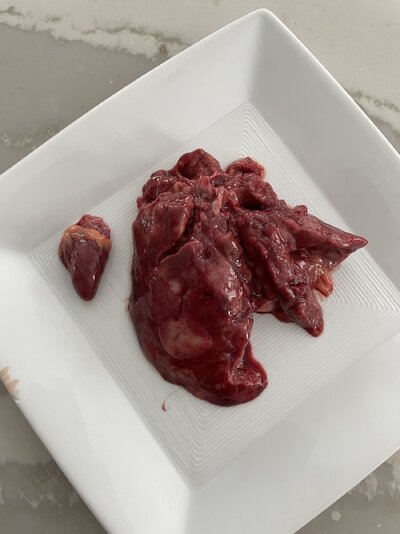Hello all, I have a flock of 45 chickens and about half of the chickens that I hatched last spring have randomly plopped over dead as they neared egg-laying age. All of my adults remain healthy with no issues. I finally did a necropsy and revealed a massive liver with white tumors in it (see photo). Everything else looked fine except for fairly atrophied intestines. No evidence of any egg production. I highly suspect lymphoid leukosis.
I have a few roosters, so I like to incubate my eggs each spring... but, now I'm not sure what to do since it looks like the virus can spread down from the flock to the eggs from the reading I've done. I saw a few people mention that it's safe if you only use the eggs from hens that have gone through 2 molts? Is that true?
I also have a few orders in for chicks from a hatchery... will they be safe bringing them in? I'm at a loss as to what to do. I really don't want to have to cull my flock especially with so many adult birds that seem quite healthy.
especially with so many adult birds that seem quite healthy.
Any help would be greatly appreciated! Thank you!
I have a few roosters, so I like to incubate my eggs each spring... but, now I'm not sure what to do since it looks like the virus can spread down from the flock to the eggs from the reading I've done. I saw a few people mention that it's safe if you only use the eggs from hens that have gone through 2 molts? Is that true?
I also have a few orders in for chicks from a hatchery... will they be safe bringing them in? I'm at a loss as to what to do. I really don't want to have to cull my flock
 especially with so many adult birds that seem quite healthy.
especially with so many adult birds that seem quite healthy.Any help would be greatly appreciated! Thank you!






